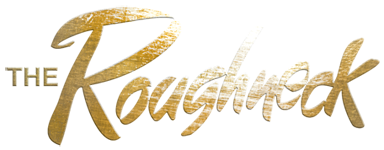
By Heather Douglas
Vladimir Putin proclaimed the meeting was a “landmark event” that will give “a strong impulse to bilateral ties.” King Salman responded he had come “looking to expand relations with friendly nation Russia in the interests of peace, security, and the development of the world economy.” The King and Putin endorsed a plan to extend the OPEC-Russia deal to cut production and boost prices beyond the current end-date of March 2018. It also contains a $1.1 billion agreement for Russia’s petrochemical giant Sibur to build a plant in Saudi.
This dance began last year when Russia met with the 14 members of OPEC (Organization of Petroleum Exporting Countries) and jointly announced they would restrict oil output in a bid to stabilize the global price of crude. Since then they have signed a $1.0 billion agreement to establish an energy investment fund, jointly managed by the Russian Direct Investment Fund (RDIF) and Saudi’s Public Investment Fund and Saudi Aramco.
Both countries want to extend their influence in the Middle East and these deals enable them to spread their political and economic clout in the global economy.
That’s the good news. The bad news is the pair signed a $3.0 billion (US) memorandum of understanding (MOU), also known as a purchase order, enabling the King to acquire the world’s “best air defense system,” according The Economist, the S-400 anti-aircraft defense system from Russia’s state arms exporter. The deal also includes: Kornet EM (multi-purpose anti-tank guided missile systems), TOS-1A (heavy flame-thrower tanks), AGS-30 (automatic grenade launcher), and Kalashnikov AK-103s (assault rifles).
The pair signed another MOU inviting Russia to help the Kingdom expand its military industries. It says the procurement is “based on the assurance of the Russian party to transfer the technology and localize the manufacturing and sustainment of these armament systems in the Kingdom.” No timeframe has been given for the deal.
In the past, Riyadh has exclusively purchased it big weaponry from the Americans, including patriot missiles (used to shoot down ballistic missiles fired by Iran-backed Houthi rebels in Yemen). They follow Turkey, another U.S. ally, who also bought the S-400 system from Russia in September.
Americans Disgruntled with New Dance
Washington is rumoured to be unhappy about this emerging alliance. The former dance partners saw Russia polkaing with Iran (Saudi Arabia’s arch-enemy) and the Saudi’s waltzing with the Americans. During the Cold War, the Saudis financially helped quip the Afghan rebels fighting against the Soviet invasion. More recently, the two countries are on opposite in the civil war in Syria with Putin backing President Bashar al-Assad and the Saudis supporting his foes (including ISIS) and the American coalition.
Chris Weafer, senior partner at Macro Advisory Partners (based in London and New York), told CNBC the Kingdom believes this relationship is very much in their interest. “King Salman doesn’t do courtesy calls, he doesn’t do photo opportunities; this [visit and relationship] makes a great deal of sense for Saudi Arabia. It needs to diversify its economy and its role in the global economy.”
Weafer says the U.S. influence in the Gulf is in decline and “Russia has taken the opportunity to run with it in terms of energy cooperation.” He thinks there is a measure of pay-back from the Saudis against the Americans because of how aggressively the U.S. had developed its shale resources. “This upset the Saudis because the unofficial deal was that OPEC countries would invest in excess capacity to be able to make sure they could meet demand from the U.S … But then the U.S. ditched OPEC and ditched Saudi Arabia.
Does this deal signal a rebalancing of the world oil market? International crude trading needs stability and a slow rise in price. The balancer may be America’s record-breaking oil exports. U.S. producers don’t seem interested in “just in time availability” which tends to spike prices and creates market volatility. Rather they want a stable balance which presupposes a continuing surplus of excess market volume. Every producer wants the predictability of crude price staying within a reasonable range so the company can expect and maintain profit margins.
More than 40 years ago, the U.S. Congress had banned the export of the country’s oil on national security grounds. “Today’s situation, where America has huge domestic extractable reserves of shale and tight oil, combined with significant improvements in production efficiency, has turned those security concerns obsolete,” reports Dr. Kent Moors, and oil and gas insider and analyst. “The U.S. is exporting roughly 1.98 million bbl/d. The rising level of American volume in the broader market now has an impact on global price and the saliency of the OPEC-Russian agreement limiting production.”
Dr. Moors also believes that American producers have a simple advantage. “The rising spread between WTI (West Texas Intermediate) and Brent (North Sea) has also served as an additional inducement to increasing U.S. exports. Exporting oil that costs less to produce at home into markets where the oil price is higher is a direct route to improving bottom-lines. If this situation remains, there will be additional U.S. production coming, because it’s profitable to extract and export.”
Perhaps this is what sent Saudi Arabia into Russia’s arms. And so, the dancing evolves.
#Oil #OilandGas #Oilexports #OilIndustry #Russians #Russia #Saudis #SuadiArabia #America #USA #U.S.A. #TheKingdom #OPEC #Sibur #MOU #WTI #Weapons #Roughneck #TheRoughneck






